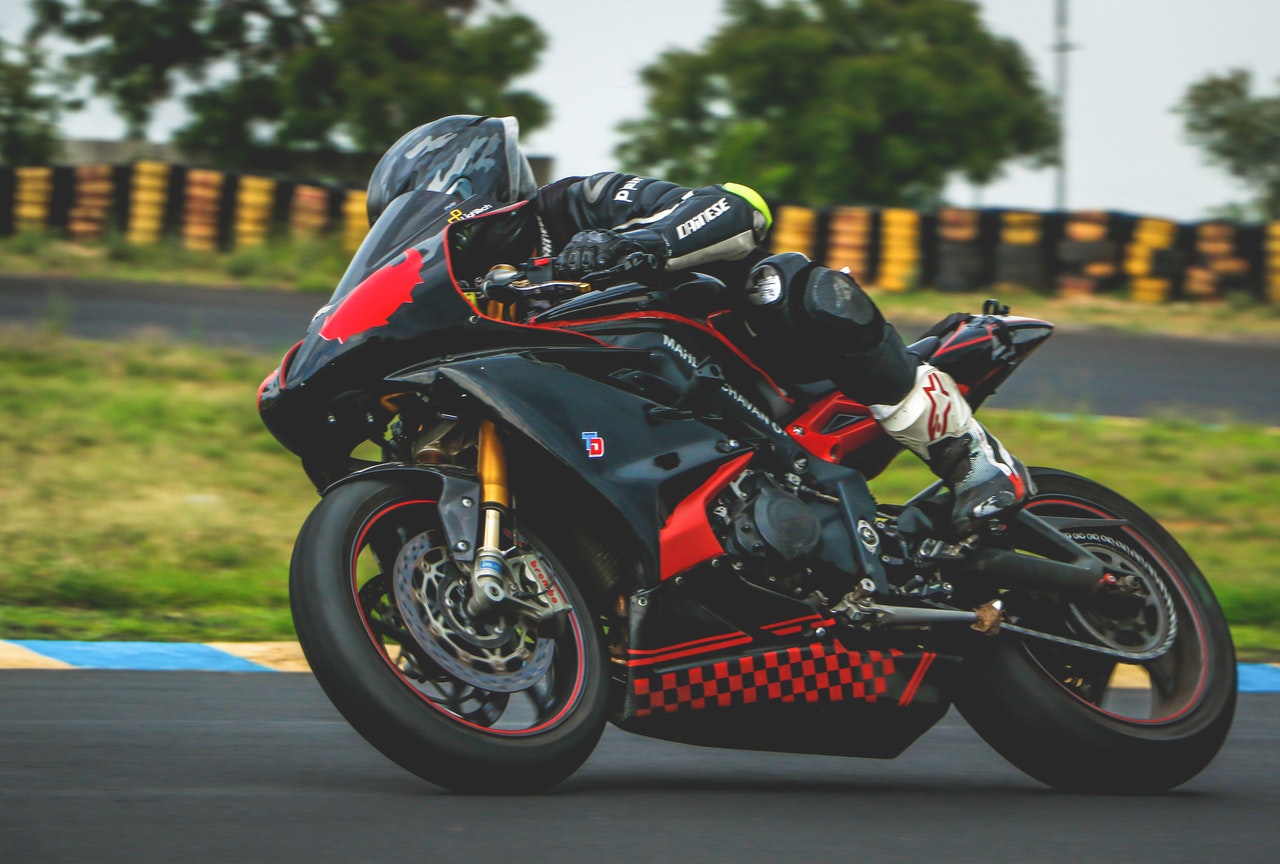Motorcycle helmets are quite durable and sturdy in their build. Even with rough use, it is quite hard to break or damage a helmet.
But do motorcycle helmets have an expiration date? In today’s post, we will answer this question and shed light on some other related topics as well.
Quick Summary
We’ll go over the following topics by the end of this article:
- Types of Motorcycle Helmets
- Important Tips for Motorcycle Helmets
- Frequently Asked Questions
Let’s get started.
Longevity of Motorcycle Helmets
Every artificial object has a manufacturing date and an expiry date. Some have a longer life span than others. Helmets are known for their highly durable build and long life span.
This is mainly due to the materials used to make a helmet. Motorcycle helmets are mainly made from a combination of Fiberglass and Carbon Fiber.
Why are these materials used for helmets?
Both materials are known for their high tensile strength and lightweight build. Furthermore, fiberglass and carbon fiber are quite cheap to make.
Manufacturers prefer these materials because it is quite easy to mold them. All these factors combined make a solid object that is quite hard to damage.
Motorcycle Helmets and Expiration Dates
As we have mentioned, motorcycle helmets are almost indestructible. To put it in Layman’s terms, there is no expiry date for helmets.
You can use a helmet as long as it is one piece. However, experts prefer to change helmets every 4-6 years. If your helmet is old, you can donate it or recycle it.
Why should I change my helmet after 5 years?
Even though the outer layer remains intact with proper care, other attachments wear out due to regular use.
These attachments make it quite necessary for you to replace your helmets. In some conditions, it might render your helmet useless.
What are these attachments?
It includes the straps, padding, visor locks, and the quality of the visor. Straps and visors can be replaced but padding can be troublesome for you.
The stiffness of foam gets lower and lower as time goes on. Your helmet might not fit you properly after 2-3 years. It’ll be hard for you to keep the helmet in one place.
In the long run, this will create a lot of inconvenience for you while driving. For more attachments, CLICK HERE.
Is there any way to avoid this?
With enough care, you can extend the life span of your helmet by 1-2 years. But ultimately, these attachments will wear out and need to be replaced.
As we mentioned earlier, you can replace the straps and visors. However, it is quite expensive and impractical to replace the padding. You are better off buying a new helmet instead.
Now, let’s check the materials used to make motorcycle helmets. You’ll be surprised by the number of different types available on the market.
Types of Motorcycle Helmets
There are two main types of material categories, composite fiber materials, and plastic-based helmets. The two materials we mentioned earlier fall in the composite fiber category.
Composite Helmets
Fiber helmets are usually made from one single material. This is why they are known as composite helmets. Mainly, they are a mixture of lightweight and strong fiber.
Here’s a list of materials that are combined for these helmets:
- Carbon Fiber
- Fiberglass
- Kevlar
Plastic Helmets
These helmets are quite unique in their build. They are made with a mixture of oil-based polymers and resins.
Each helmet has a different value of flexibility and durability. You can choose from lightweight/durable and heavyweight/rigid helmets.
Here’s a list of these materials:
- Polycarbonate
- Advanced Thermoset Resin
- Advanced Thermoplastic Blend
So, what is the main difference between the two categories?
On the surface, there isn’t much difference between the two material builds. Both categories are highly durable and difficult to break even after constant use.
However, you can notice the minor differences at high speeds. Composite helmets are designed for bikes above the 250cc range. They are aerodynamic and resistant to vibrations.
On the other hand, plastic helmets are designed for rather casual motorcycle rides. They aren’t as aerodynamic but highly resistant to vibrations.
Which category has a better durability ratio?
Naturally, composite helmets have a longer life span. If handled with care, you can use composite helmets for up to 10 years.
Whereas, the maximum life span of a plastic helmet is only 5 years. Another drawback of plastic helmets is that they are quite susceptible to scratches.
What’s the best option for me?
It depends on your personal preference. We recommend that you get a helmet that is comfortable to wear. Some prefer lightweight helmets while some go for a rather rigid option.
As far as the durability is in question, both options are good. 5-year lifespan is still a pretty long time before you’ll need a new helmet.
What about the visors?
For visors, you can choose from clear and tinted options. Clear visors are suitable for day and night drives.
Whereas, tinted visors are only suitable for day drives. It is quite difficult to see through tinted glass/resin in low light. Moreover, the lens flare is quite problematic.

Important Things to Keep in Mind
Following are some basic tips you can use to increase the overall life span of your helmet. Let’s take a look.
- Always unlock the straps slowly and carefully. This will keep your straps from wear and tear in the long run. Moreover, it’ll keep the strap lock strong and intact.
- Avoid unnecessary movements of the visor. Constant use can loosen the plastic-bearing inside the visors.
- Do not choose a helmet because it looks cool. Prioritize durability and safety over the design. You can find multiple options that feature both aspects.
Frequently Asked Questions (FAQs)
We have gathered some questions asked by many people from around the web. Let’s check them out.
What is the best motorcycle helmet design?
Modular helmets have gained a lot of popularity in recent years. This is mainly due to their dual functionality. You can use modular design as a visor and non-visor helmet.
What sort of padding is most reliable?
Foam padding is your go-to option. It makes the helmet quite comfortable to wear. Besides that, the foam takes a lot of time to lose its original condition.
How often should I clean my helmet?
You should clean your helmet after 2-3 drives. This will keep the outer layer in fresh condition. For cleaning, you can use any all-purpose liquid. Just make sure to apply it on the outer part only.
Wrapping Things Up…
Motorcycle helmets are highly durable objects. Even though they don’t come with an expiration date, there is still a life span that you should keep in mind. In our opinion, you should change your helmet after 5-years from the date of use.
With this, we come to the end of our post on motorcycle helmets and their expiration dates. We hope this information proves to be useful for you.
Do let us know how often do you change your helmets. CLICK HERE to learn more.

